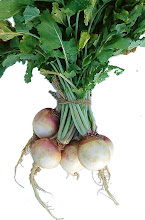5. Half-eaten Korean pear
4. Rollex watch (with correct time)
3. Pair of Num-chucks
2. Signed Elvis dinner plate
1. Robin Williams
Real news for real physicians with a really real desire for real change.
"[In the Medical Home world we call cords], 'cords of death'," said Dr. Yale. The researcher explains that some new Medical Home builds don't even have electricity. "In moderate climates...we can allow [residents]...freedom [from energy bills.]"
The mainstay of the Medical Home is the close and centralized monitoring of the patient. The multidimensional surveillance system tracks everything from heart rate to bowel movement frequency.
"If you install your mother in one of our OMH homes we will guarantee you a monthly report of fall rates, flatus volumes, diaper changes and emesis occurences, " detailed Sam Jiloperon, Lead Technologist at OMH.
"I can finally sleep at night," said Sally Moonchowsen, who recently installed her mother into a new OMH home. She chose Safe Gardens, a new OMH settlement located in Gunner Creek, Ohio. "I am never bothered by calls from nurses or my mother about falls," she proudly exclaimed. "In fact, I never have to see her anymore at all. It's all in the OMH status summaries."by Hughe Staffwriter
An ancient technique called the “history” may help in the processing of bioconsumers, a new report suggests.
“Asking a bioconsumer questions just might help in the biotechnician’s job of case processing,” said Dr. John Hermes, dean of the University of Rochester School of Biotechnology. “It could mean the difference between a correct calculus and a wild recursive-loop chase.”
Long ago abandoned by the biotech field some recent pioneers have been talking to people with biofailures and finding that it has been helpful in elucidating their underlying problems.
“It’s really quite simple,” explains Dr. Hermes. “The biotechnician basically sits down in front of the bioconsumer and completes a verbal exchange.” According to Dr. Hermes, “the Medicomp just incorporates the lexical content just like any other data input stream.”
Naturally many of Dr. Hermes’s colleagues are skeptical. “The idea that the bioconsumer could have anything remotely relevant to say regarding their underlying biofailure is naive,” says Dr. Mark Auster, lead mediprocessor at
Once used regularly by doctors, as biotechnicians were once called up until the late 21st century, “taking” a history entails asking the bioconsumers relevant questions about their experience; about how they “feel”. When the person begins to suspect that a problem might be brewing in his or her bioware instead of scanning their INDy (Implantable Nanomonitoring Device) and interfacing with their primary biotechnologist on the Medinet the malfunctioning person might consider asking to speak with her biotech…directly.
“Can you imagine the disruption in processing flow?” Dr. Auster speaks for many. “For the past 30 years we have finally reached 7-sigma efficiency. Speaking with people would just throw all that progress away.”
“I realize this is radical,” responds Dr. Hermes, asynchronously. “Sometimes it’s gratifying to interface with bioconsumers face-to-face. My JuSTo (Job Satisfaction Tracker) lights right up,” says the smiling dean. “Students seem to really find it novel.”
“I was really nervous about talking to people about their sensations,” replies Sarah Janus, student at the
“Yeah, it’s kind of wild,” responds Tim, a fellow student. “[Bioconsumers] say stuff that can help in their processing. I talked to a female biocon during last month’s meditronotelonanocomp rotation. She complained of feeling something. I was, like, whoa, what am I supposed to do with that data?”
Dean Hermes has begun an introduction to verbal exchange course for all new biotechnology students. The proposal for the course design was recently published in the New American Journal in February’s issue. Other deans have expressed tentative interest.
“We’ll follow this with a wait-and-compute approach,” responded dean Pandora of Duke University. “Dr. Hermes may be onto something. However, it would be a bit presumptive at this stage to implement what really is a radical approach without firm data.”
“If we go down this path what are we to see next?” Dean Alexander of
